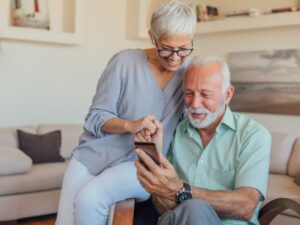What do both patients and practitioners want in a healthcare app?
According to the National Institute of Health, the number of individuals 65 years of age and older in 2016 worldwide was 617 million. This number has risen to approximately 750 million today and is predicted to continue increasing. As the world’s elderly population grows, there has become a greater need to keep a larger number of people healthy. One method of doing so is through healthcare apps.
The usage of mobile apps in healthcare, MedTech, and eHealth has skyrocketed in the past 5 years. According to Liquid-State, in 2018 there were over 318,000 mobile healthcare apps available for patients, and approximately 200 new healthcare apps were being built each day. This number is staggering, and we can assume that this number has increased substantially since the Covid-19 pandemic.

A healthcare app can be defined as a mobile application program that offers health-related services. Telemedicine apps are more specific because they allow patients to schedule appointments with their healthcare provider while sharing documents back and forth. On the other hand, healthy diet apps or mental health apps encompass a wide range of general health and wellness topics. For instance, WebMD allows seniors to gather information about their specific condition, get deals on prescriptions, and be reminded to take their medicine.
The sign-in process should be smooth and simple. It’s great to have unique functionalities in the app, but the basic features should be easily accessible to the end-users.
If it’s a health app, patients look for functionality that helps them save time on booking, changing, or canceling a doctor’s appointment. The healthcare app needs to provide clear and actionable information for all users. What we mean by this is that many apps fail to take patients with disabilities into consideration. It is important to cater to the needs of all potential users and provide reasonable and helpful functions.
Patients usually download healthcare apps to learn more about their condition, the causes and take action based on the available opportunities. It’s important that apps provide interactive tools to keep users engaged and feel that they are receiving individualized care.

According to AJMC, studies show that nearly 75% of doctors, ER, and urgent care visits could be handled via phone or video. It was also calculated that the average time for an in-person visit was 121 minutes. Many impromptu visits are basic and don’t need an in-person evaluation. Apps can save patients and practitioners incredible amounts of time if built correctly. Telehealth services need to provide the same or better experiences than conventional in-person doctor-patient interactions.
A poll developed by University of Michigan’s Institute for Healthcare Policy and Aging suggests that almost 1/3 of those aged 50-80 use healthcare apps. These individuals utilize them to monitor and evaluate exercise, nutrition, weight loss, and sleep.

Overall, what are some of the traits that are crucial for healthcare apps to have?
They can be found by analyzing the patients’ lifestyles and personal preferences. An article from the Innovation Insider expresses the power of simplicity and convenience. Seniors value easy use, a wide variety of information about their condition, and an easy way to speak with their healthcare provider, among other things. Think about these features when recommending one to loved ones.

McGregor is dedicated to ensuring the health and wellbeing of its residents. For more blogs like this, be sure to visit https://mcgregoramasa.org/category/blog/.
Grace Meyer, Marketing & Communications intern at McGregor aided in writing this article and is a rising senior at Elon University, NC.

